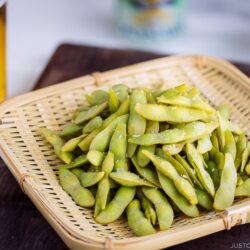
How to Cook Edamame
Lightly boiled and perfectly salted, edamame is the classic Japanese appetizer. They're delicious to snack on and packed with a nutritional punch. Learn how to prepare these young soybean pods with the authentic Japanese method.
Ingredients
- 1 QT water (4 cups)
- 4 Tbsp Diamond Crystal kosher salt (The rule of thumb for cooking edamame in Japan is 4% salt water because of their thick pods (read the blog post); use 40 g salt per 1000 ml water (FYI, seawater is 3.5%); the soybeans will not taste too salty, trust me!; save some salt for sprinkling after cooking)
- 10 oz edamame (frozen or fresh, in pods; read the instructions carefully for "fresh" or "frozen"; you can increase up to 14 oz (397 g) but no more than that)
Instructions
To Cook the Frozen Unshelled Edamame Pods
- Gather all the ingredients. These instructions are for frozen edamame pods. See the next section for fresh edamame pods.
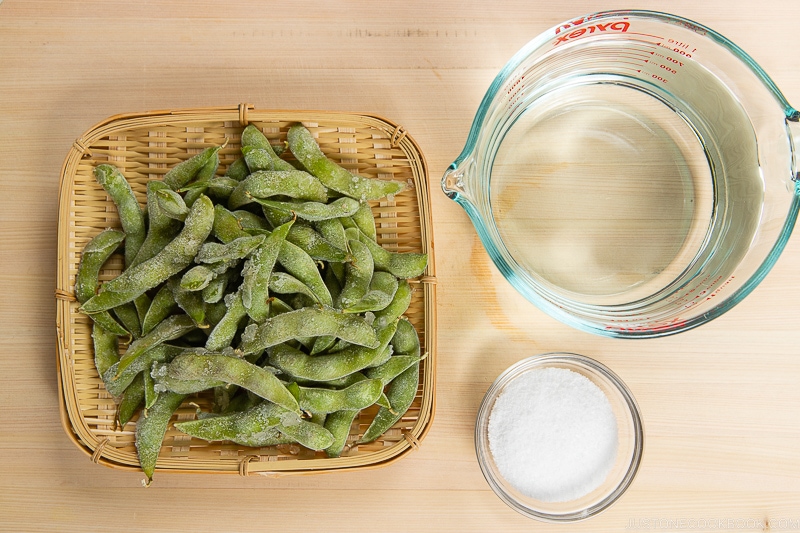
- Add 1 QT water to a pot and bring it to a boil over medium-high heat. From the 4 Tbsp Diamond Crystal kosher salt, reserve ½ tsp kosher salt for sprinkling later and add the rest of the salt to the boiling water.
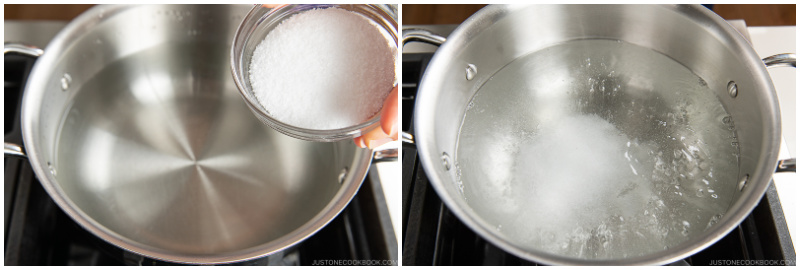
- Add 10 oz edamame pods (frozen) to the boiling salted water and cook, stirring once in a while, for 4–5 minutes, or until the soybeans are an al dente consistency. (Read the package instructions carefully and check if the soybeans are raw or cooked. Edamame imported from Japan are always precooked, so you only need to boil them for 1 minute to reheat.) If you see foam forming on the surface of the water, remove it with a fine-mesh skimmer because we do not rinse the pods after cooking.
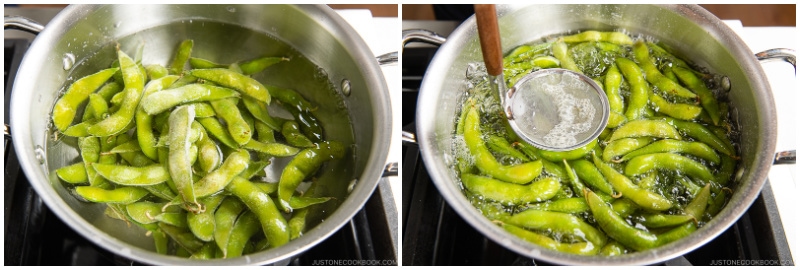
- Drain in a colander and DO NOT RINSE, or the edamame will lose their salted flavor. While the edamame pods are hot, sprinkle with the reserved salt. Let them cool naturally so the edamame can absorb the seasoning.
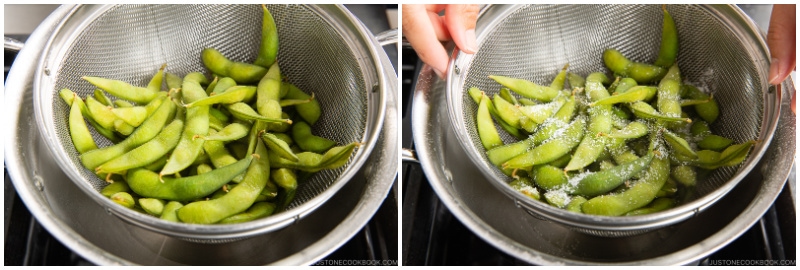
- Serve the edamame warm or at room temperature. To eat, remove the soybeans from their inedible pods and enjoy.
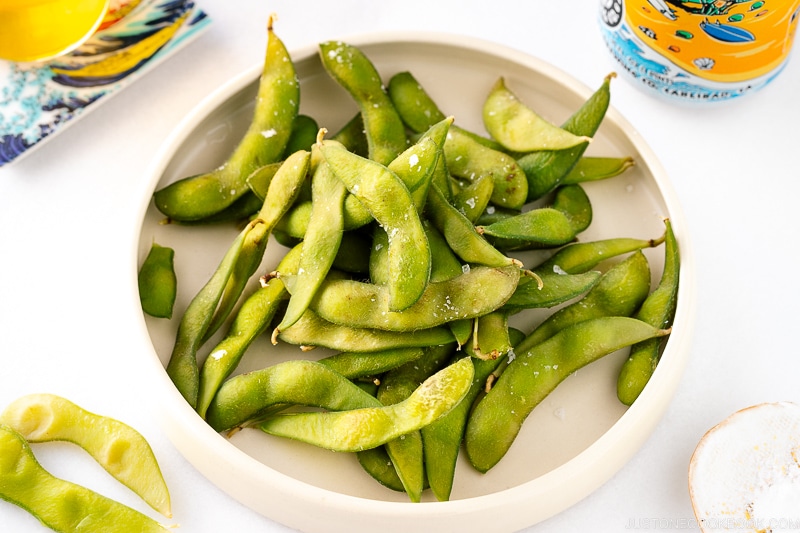
To Cook the Fresh Unshelled Edamame Pods
- Gather all the ingredients. These instructions are for fresh edamame pods. See the previous section for frozen edamame.
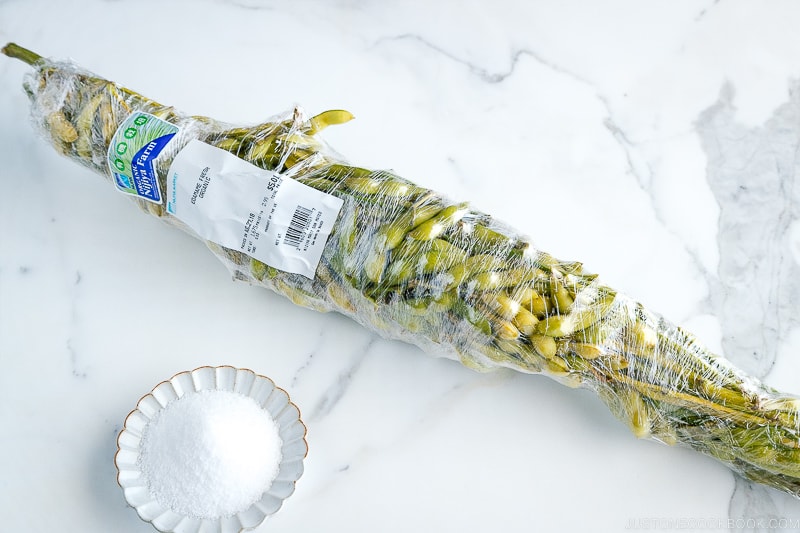
- Remove the pods from the stems.
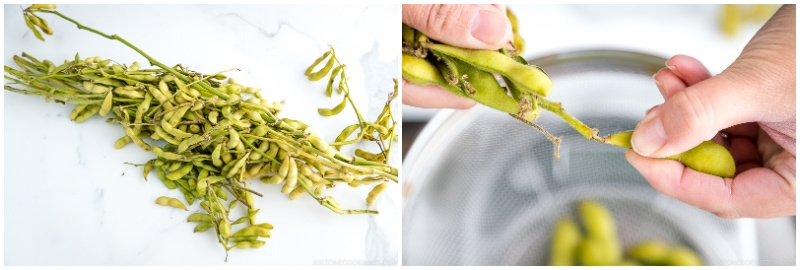
- Measure 10 oz edamame pods (fresh). Tip: If you do this once, you‘ll know the approximate weight next time without measuring.
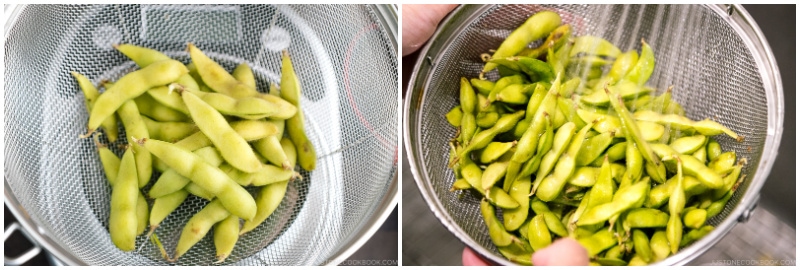
- Add 1 QT water to a pot and bring it to a boil over medium-high heat. Meanwhile, use a pair of kitchen shears to cut off the tops and the tails of the pods, about 2–3 mm. If the water starts boiling, cover the pot and turn off the heat for now.
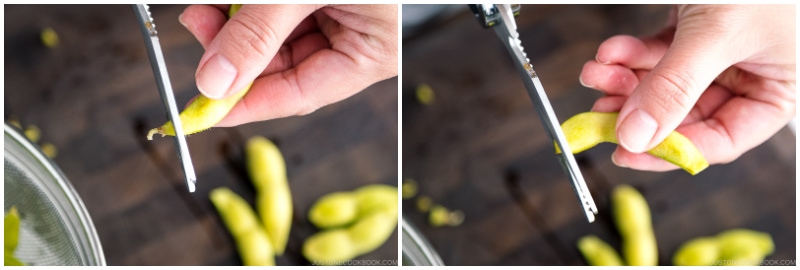
- Place the edamame in a bowl or tray and sprinkle 1 Tbsp kosher salt on the pods. Rub the salted pods against each other with your hands to remove the fuzz. Do not rinse off.
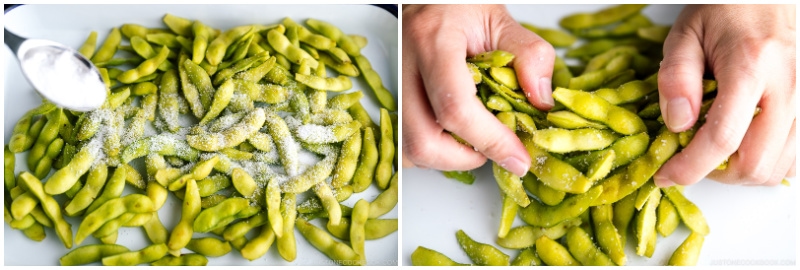
- From the 4 Tbsp Diamond Crystal kosher salt, reserve ½ tsp kosher salt for sprinkling later and add the rest of the salt to the boiling water. Then, add the salted pods to the pot.
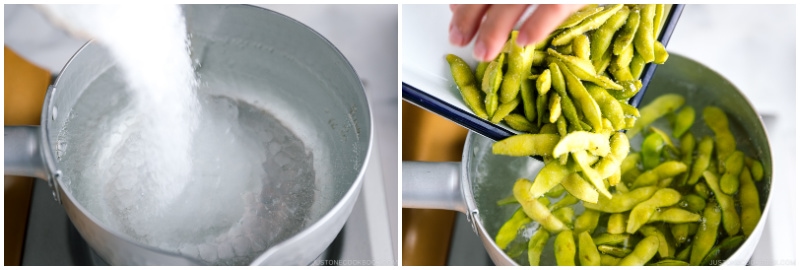
- Cook on medium heat for 3–5 minutes, or until the soybeans are an al dente consistency. Stir occasionally to make sure all the pods are cooking evenly. Start checking for doneness after 3½ minutes. Tip: Since we do not run cold water on the edamame after boiling, I recommend slightly under-cooking them since the edamame will continue to cook in their residual heat once drained.
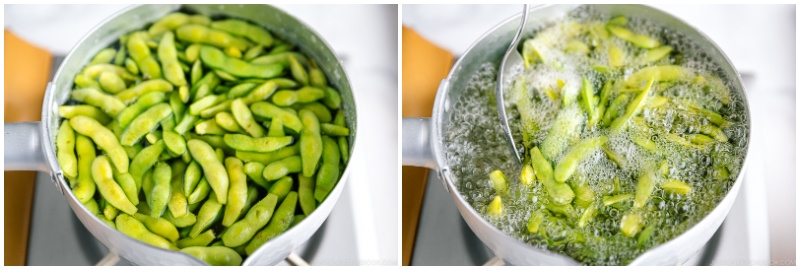
- If you see foam forming on the surface of the water, remove it with a fine-mesh skimmer because we do not rinse the pods after cooking.
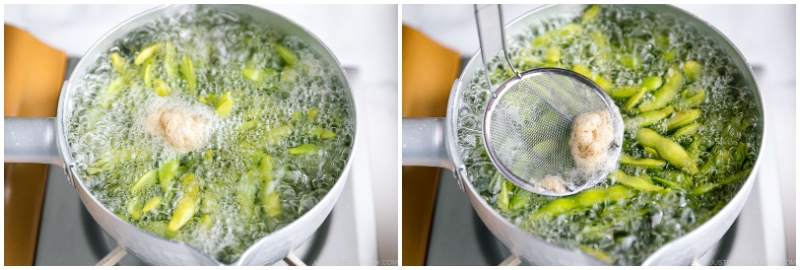
- Drain in a colander and DO NOT RINSE, or the edamame will lose their salted flavor. While the pods are hot, sprinkle with the reserved salt. Let them cool naturally so the edamame can absorb the seasoning (If you did not cut the ends off the pods, please let them rest for at least 1 hour).
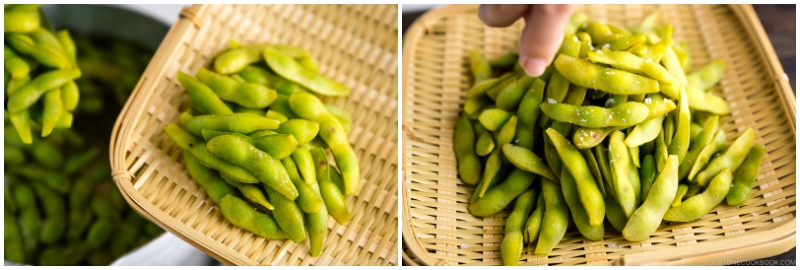
- Serve the edamame warm or at room temperature. To eat, remove the soybeans from their inedible pods and enjoy.
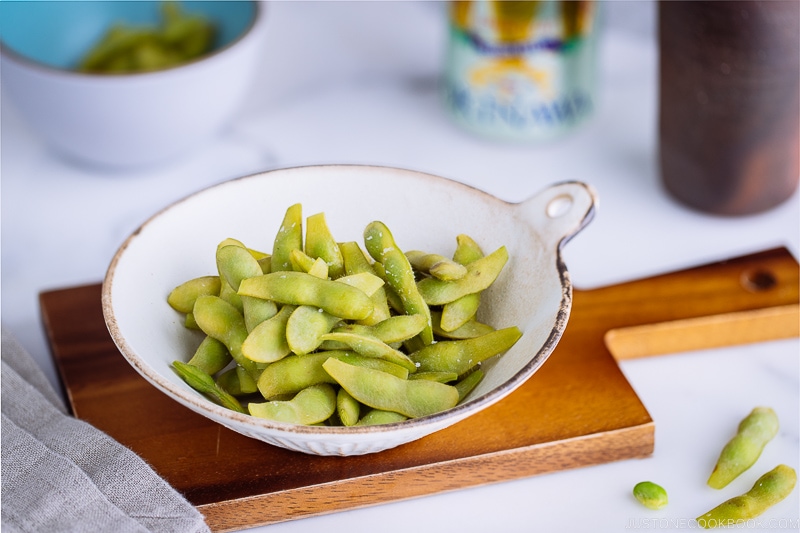
To Store
- If you want to preserve the edamame, cook the edamame, cool completely, and then freeze. You can defrost them naturally or you can quickly blanch them in boiling water or use a microwave to reheat.
Nutrition
Calories: 76kcal, Carbohydrates: 6g, Protein: 7g, Fat: 3g, Saturated Fat: 1g, Polyunsaturated Fat: 1g, Monounsaturated Fat: 1g, Trans Fat: 1g, Sodium: 6mg, Potassium: 272mg, Fiber: 3g, Sugar: 1g, Vitamin C: 4mg, Calcium: 75mg, Iron: 1mg